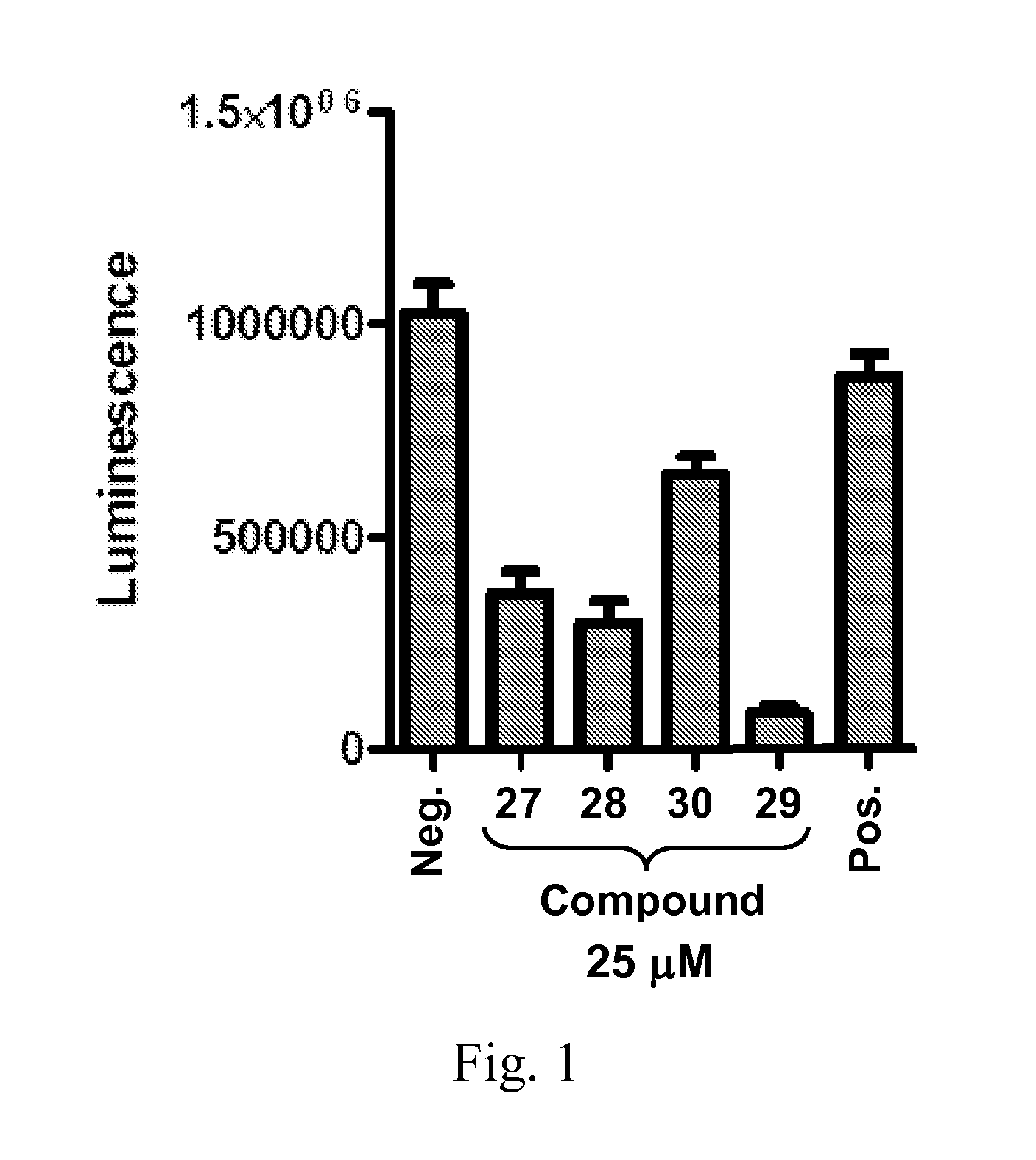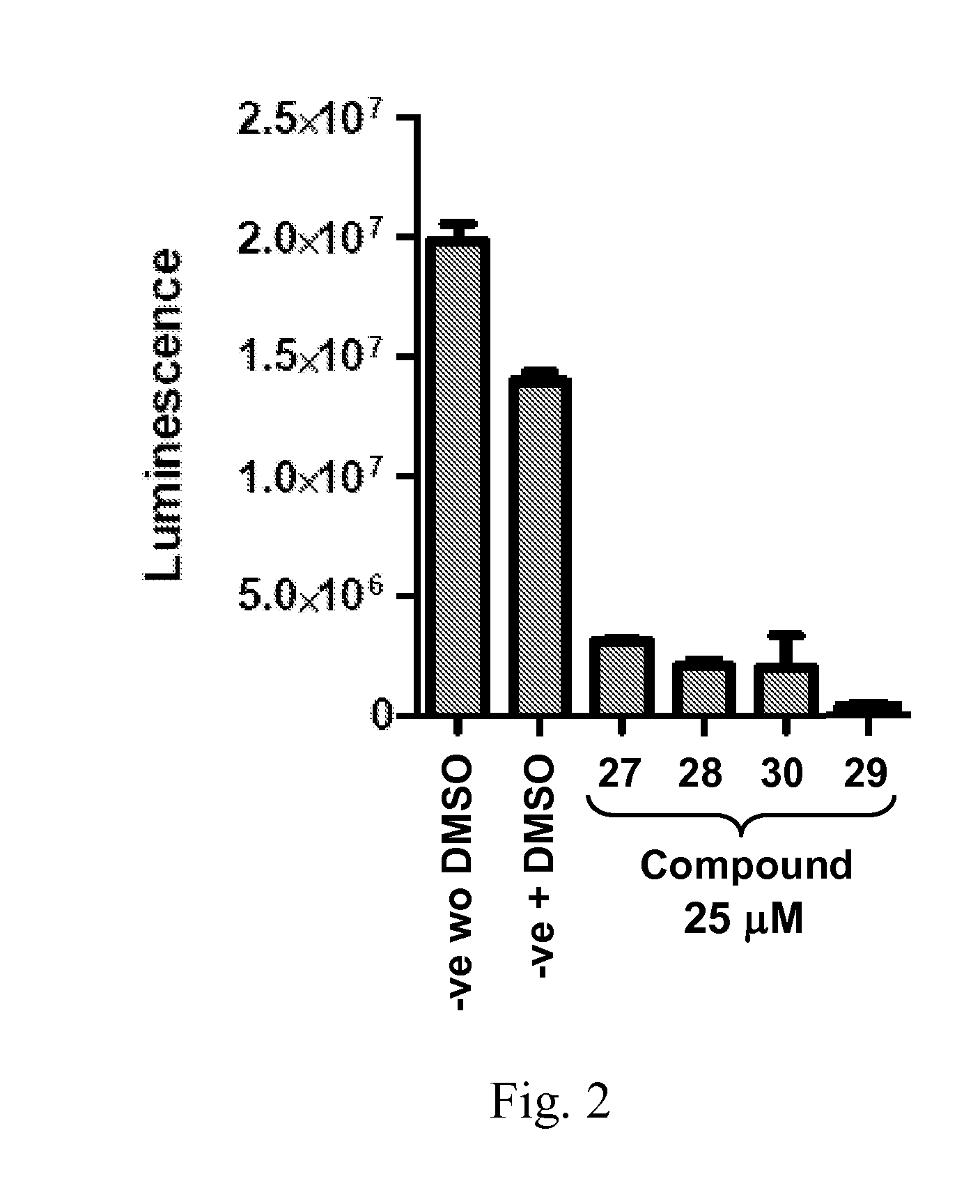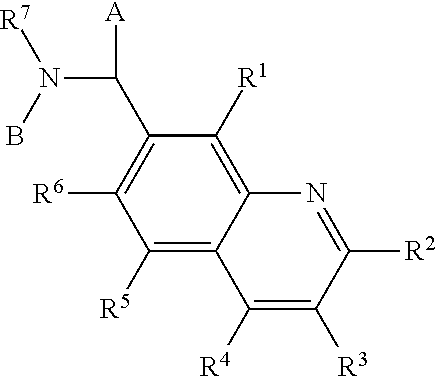Flavivirus inhibitors and methods for their use
a technology of flavivirus and inhibitors, applied in the field of flavivirus inhibitors, can solve the problems of no approved vaccines or antiviral therapies for den- or wnv-infected humans, considerable morbidity and mortality, and high cos
- Summary
- Abstract
- Description
- Claims
- Application Information
AI Technical Summary
Benefits of technology
Problems solved by technology
Method used
Image
Examples
example 1
High throughput screening was performed at Harvard Medical School National Screening Facility-ICCB, Longwood (Boston, Mass.) using the compound libraries named NINDS Bioactives, Chemdiv 2, Maybridge 3, ICBG fungal extracts, Enamine 1, IF lab 1, and Bionet 2.
Expression of WNV in E. coli and Purification
Procedures for expression and purification of WNV (EG101 strain) were similar to those described elsewhere by Mueller et al., Int. J. Biochem. Cell. Biol., 39: 606-14 (2007). Briefly, E. coli Top10 F′ cells (Invitrogen, Carlsbad, Calif.) were transformed with the protease expression plasmid. Cells were grown at 37°C until the OD600 was ˜0.5. Cells were then induced with isopropyl-1-thio-β-D-galactopyranoside (American Bioanalytical, Natick, Mass.) (0.5 mM), and incubated for 4 h at 37° C. Cells were harvested by centrifugation (5000×g) for 15 min at 4° C., washed once with a buffer containing 50 mM Tris-HCl, pH 7.5, and 200 mM NaCl, centrifuged at 5000×g for 15...
example 2
Additional Compounds
Compounds 33, 34, 35, and 36, examples of Compound III, were tested for replicon inhibition and cytotoxicity to WNV and DENV-BKH.
Cell Culture
Baby Hamster Kidney (BHK) and African green monkey kidney epithelial cells (Vero) were cultured in Dulbecco's Modified Eagle Medium (DMEM) (Cellgro®; Mediatech, Inc., Manassas, Va.) supplemented with 10% fetal bovine serum, MEM nonessential amino acid (Cellgro®) (5 ml / liter), and Penicillin-Streptomycin (2.5 ml / liter). Dengue 2 replicon expressing BHK cells and WNV replicon expressing Vero cells were cultured in DMEM as described above containing additionally Geneticin or G418 (Fisher Scientific®, Pittsburgh, Pa.) to maintain the selective pressure of the replicon expressing cells.
Dengue 2 replicon expressing BHK cells and WNV replicon expressing Vero cells were plated 100 μl into a black 96 well plate (Greiner Bio-One; Monroe, N.C.) with 105 cells / ml concentrations. After 6 hours of incubation, 1 μl...
PUM
| Property | Measurement | Unit |
|---|---|---|
| pH | aaaaa | aaaaa |
| pH | aaaaa | aaaaa |
| pH | aaaaa | aaaaa |
Abstract
Description
Claims
Application Information
 Login to View More
Login to View More - R&D
- Intellectual Property
- Life Sciences
- Materials
- Tech Scout
- Unparalleled Data Quality
- Higher Quality Content
- 60% Fewer Hallucinations
Browse by: Latest US Patents, China's latest patents, Technical Efficacy Thesaurus, Application Domain, Technology Topic, Popular Technical Reports.
© 2025 PatSnap. All rights reserved.Legal|Privacy policy|Modern Slavery Act Transparency Statement|Sitemap|About US| Contact US: help@patsnap.com



